HVAC systems keep air flowing through your building. The system will use several distinct types of dampers to do this. Volume control and balancing dampers are the most common type used in HVAC, which open and close off ductwork to direct and regulate airflow. However, there will be situations that require a specialized damper.
For instance, there may be a point in an HVAC system that needs pressure relief. Or you may find yourself designing an HVAC system for a tunnel network. These scenarios are specialized applications that require specialized dampers. In this article, we will explore four HVAC dampers designed for specialized applications.
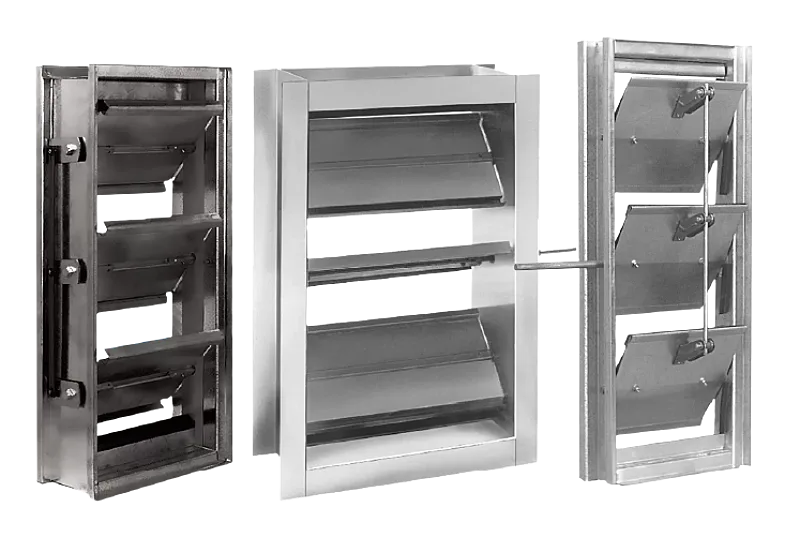
Pressure Relief Dampers
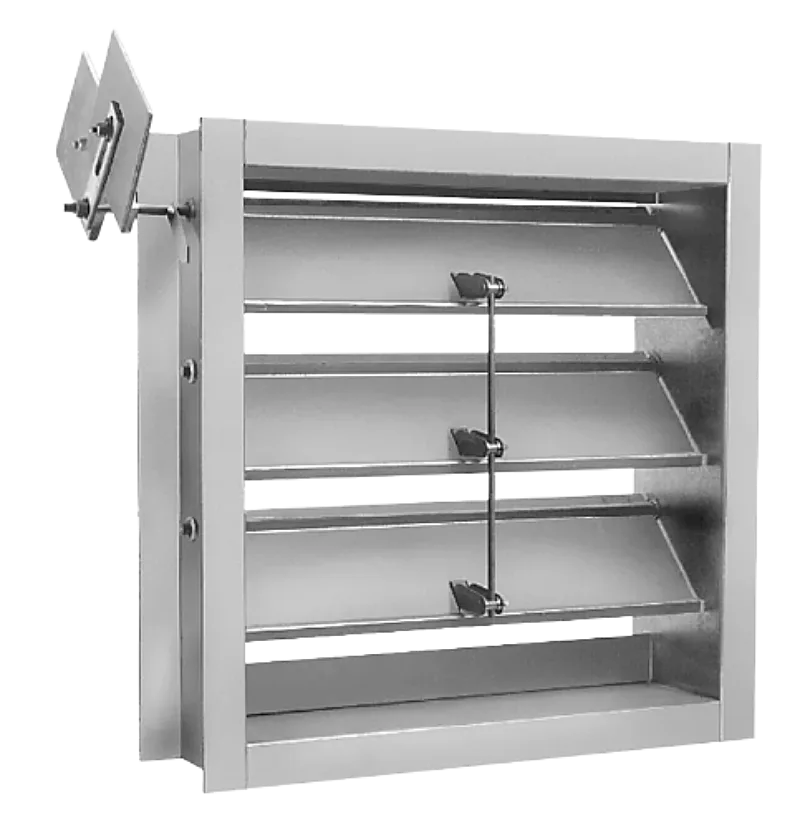
Air flow is a balancing act between static and dynamic pressures. Each damper will generate static pressure as air passes through its free area, while system fans generate dynamic pressure to push air through the duct. The goal is to keep the system’s dynamic pressure over the static pressure caused by the damper, to keep air moving through the duct. However, it’s not always as easy as increasing fan speed. Everything has limits. Ducts and dampers will have a maximum allowable pressure. Pressure relief dampers can help alleviate excess pressure in the duct.
Pressure relief dampers are specialized backdraft dampers that open at a given air pressure, measured in inches of water gauge. These dampers are designed to open and release the excess pressure generated in the duct. As a backdraft damper, they also prevent air from passing back into the duct through the damper. Pressure relief dampers keep air pressure within a safe range by releasing any excess pressure in the duct. Consider adding pressure relief dampers in areas where pressure build up will be a concern.
Inlet Vanes
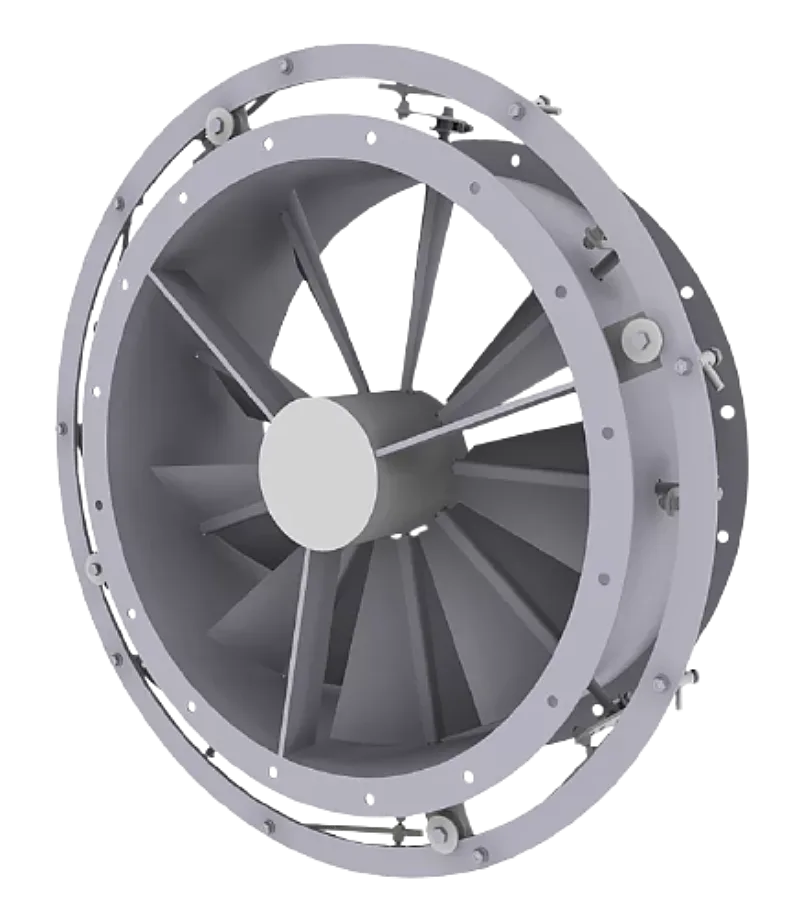
Fans are the transport system of the HVAC system. They draw air in through intake points and drive it through ductwork to where the air is needed. Inlet vanes and fan outlets are dampers that aid fans in driving airflow. Inlet vanes are round dampers with several blades situated like the spokes of a wheel around a central hub. The axles of these blades are all connected at the hub of the vane.
The blades will be slightly angled when in the fully open position. The incoming air stream will curve, or spin, as it passes through the vane. Pre-spin air from inlet vanes can reduce the pressure and load on fans, while maintaining the necessary air speed. This allows more efficient airflow through the system. Vane blades can rotate clockwise or counterclockwise to match the rotation of nearby fans. These specialty HVAC dampers can aid system fans in moving air without taxing the system, which can help increase overall system efficiency.
Tunnel Dampers
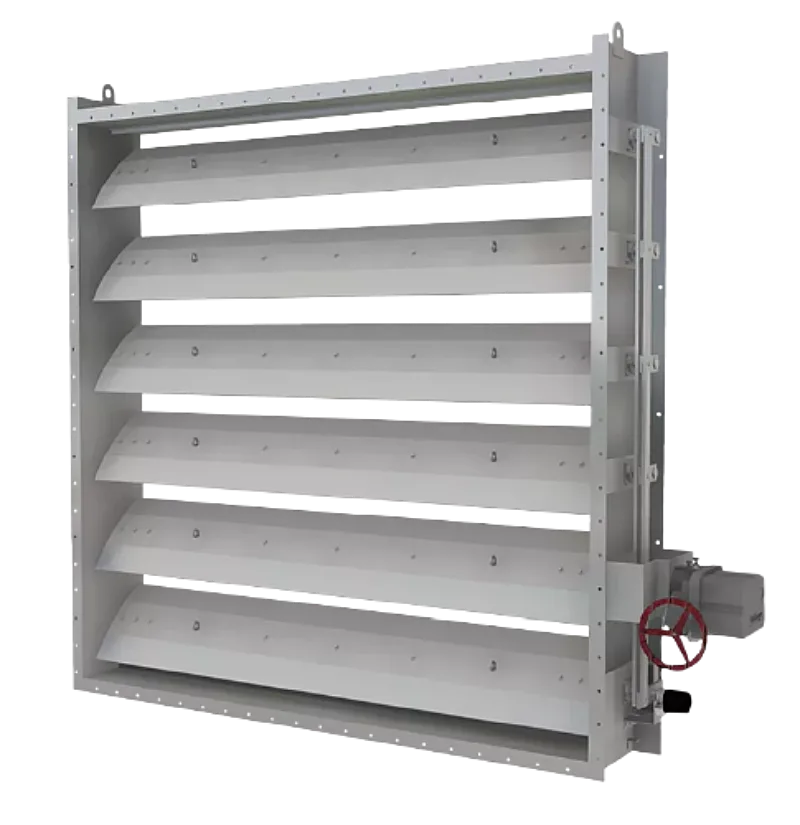
Underground areas require adequate ventilation. Commuters should wait for their train in a comfortable environment. Workers will need a constant supply of fresh air to safely work in tunnels and other subterranean environments. Tunnel dampers are used in these areas for a variety of purposes, including pressure equalization and for portal intake and exhaust.
Tunnel dampers are industrial dampers built for heavy duty airflow. These dampers must be able to handle intense air pressures and high velocity airflow. For instance, trains create a piston effect as they pass through tunnels to the station. This causes a sudden rush of air through the tunnel as the train moves. Tunnel dampers will open their blades as the train passes to alleviate this intense pressure. Occupants stay safe when their train arrives. Tunnel dampers can also be used to control the spread of smoke and fire, so that tunnel occupants can safely evacuate the area. Tunnel dampers serve a specific application, but they are designed and built to perform it without fail.
Isolation Dampers
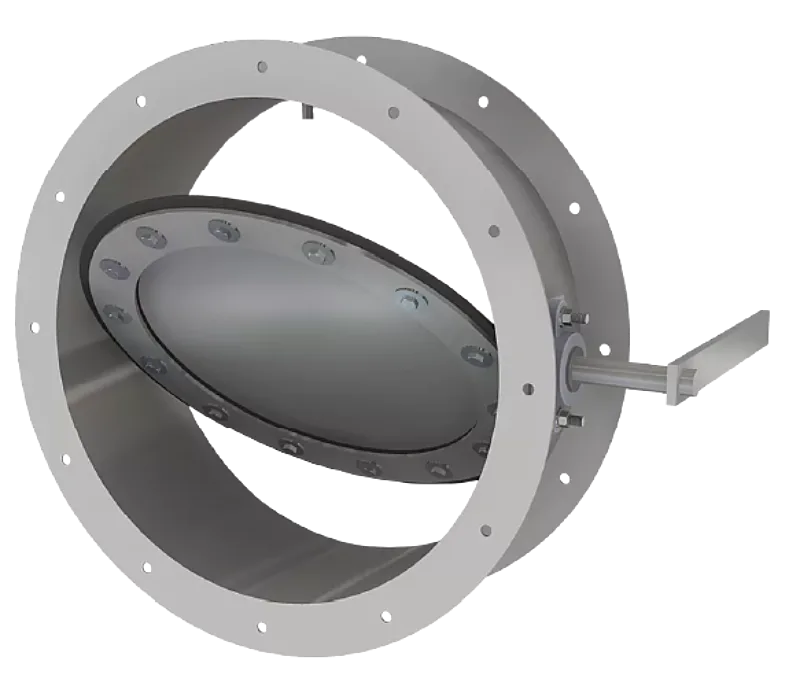
Dampers are not airtight when they close. There will be a small space between each blade and between the blades and jambs of the damper. Air can pass through these spaces when the damper is closed. Air leakage is common in standard control dampers, even for dampers with seals along their blades and jambs. However, the amount of leakage is minor in these cases. This is manageable for most applications.
There are certain HVAC applications where tight closure is vital to the system. Isolation dampers provide minimal leakage when closed. These dampers are designed for tight blade closure with specialized seals. This leaves no space between blades for air to pass. Like tunnel dampers and industrial dampers, isolation dampers are also built from sturdy materials for heavy duty applications. These traits can be important in sensitive areas that require precise air control or in areas where contamination between zones is a primary concern.
AWV and HVAC Dampers
Dampers perform important tasks in your HVAC system, and sometimes those tasks require a specialized damper. Check the need of the application and understand the requirements before finalizing your selection. The right damper will keep your system running in peak condition.
AWV builds dampers for HVAC. From standard volume control to specialty applications, we can build you the right damper to meet your requirements. Contact our industry experts today. Let us put our HVAC experience to work for you.





